Abstract
1. Intravenous injections of lobeline HCl into twenty-six normal young male human volunteers produced sensations of choking, pressure or fumes in the throat and upper chest at a mean threshold dose of 12 micrograms kg-1. 2. Reflex changes in breathing pattern usually appeared just before the sensations. Increasing the dose of lobeline increased the intensity of the sensations gradually until a dry cough appeared at a mean threshold dose of 24.3 micrograms kg-1. At these doses there was a mean difference of 0.3s in the latencies for sensation and respiratory reflex; in four subjects there was no difference at all. 3. In cats anaesthetized with 35 mg kg-1 sodium pentobarbitone, injecting 25-67 micrograms kg-1 lobeline into the right atrium sensitized thirteen out of seventeen rapidly adapting receptors (RARs). In three out of four cats lobeline had no excitatory effect on the RARs in the absence of normal activity (i.e. when it was injected while artificial respiration was suspended), but on restarting the respiration the activity increased greatly. After injecting lobeline, the activity increased during inflation or deflation or in both phases of the respiratory cycle. It also increased greatly during deflation produced by suction of air from the lungs after lobeline. Such presumed increased activity in the RARs of man produced by forced expiration to residual volume at the time lobeline-induced sensations were expected did not enhance the sensations in any subject. 4. In all the subjects tested, forced expiration alone, which should stimulate RARs, never produced a dry cough or sensations similar to those produced by lobeline.(ABSTRACT TRUNCATED AT 250 WORDS)
Full text
PDF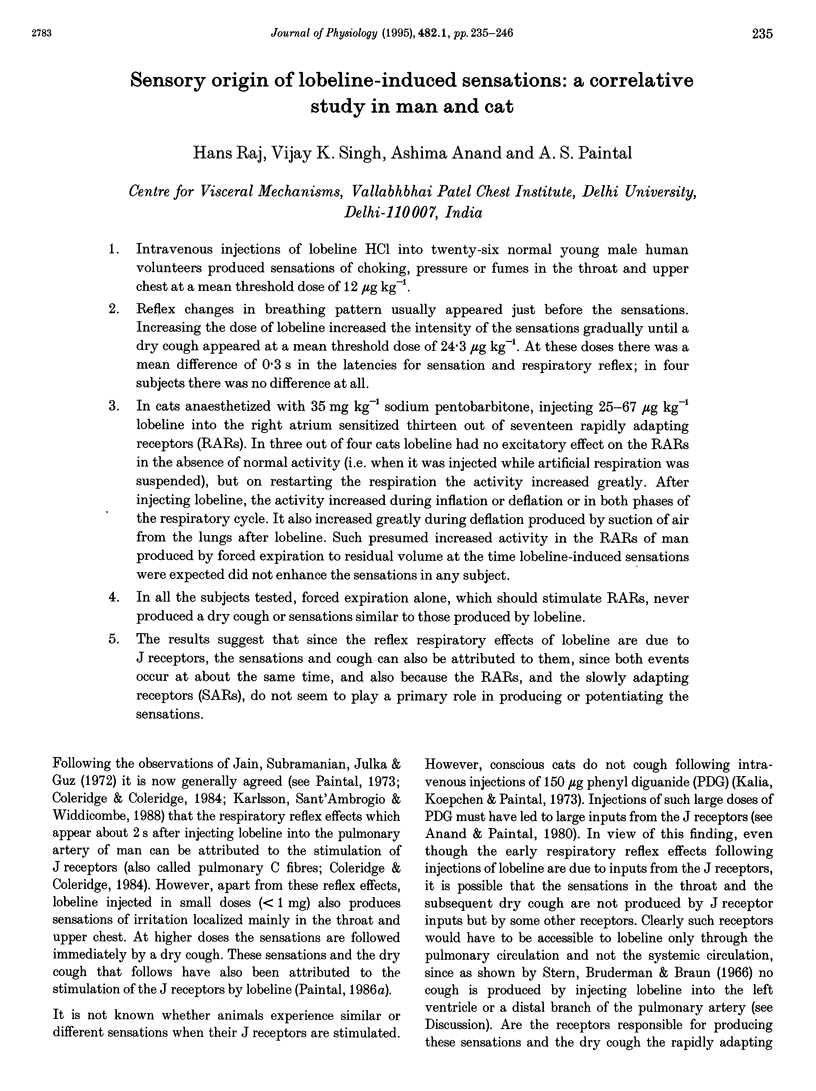
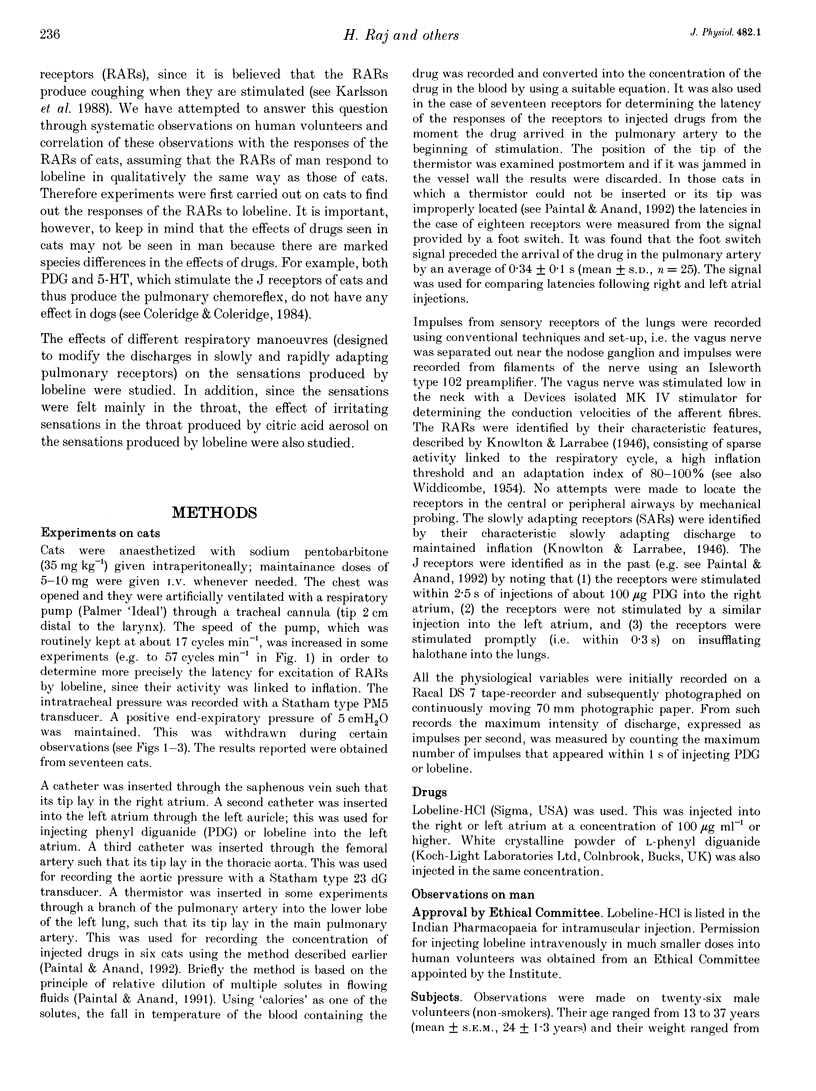
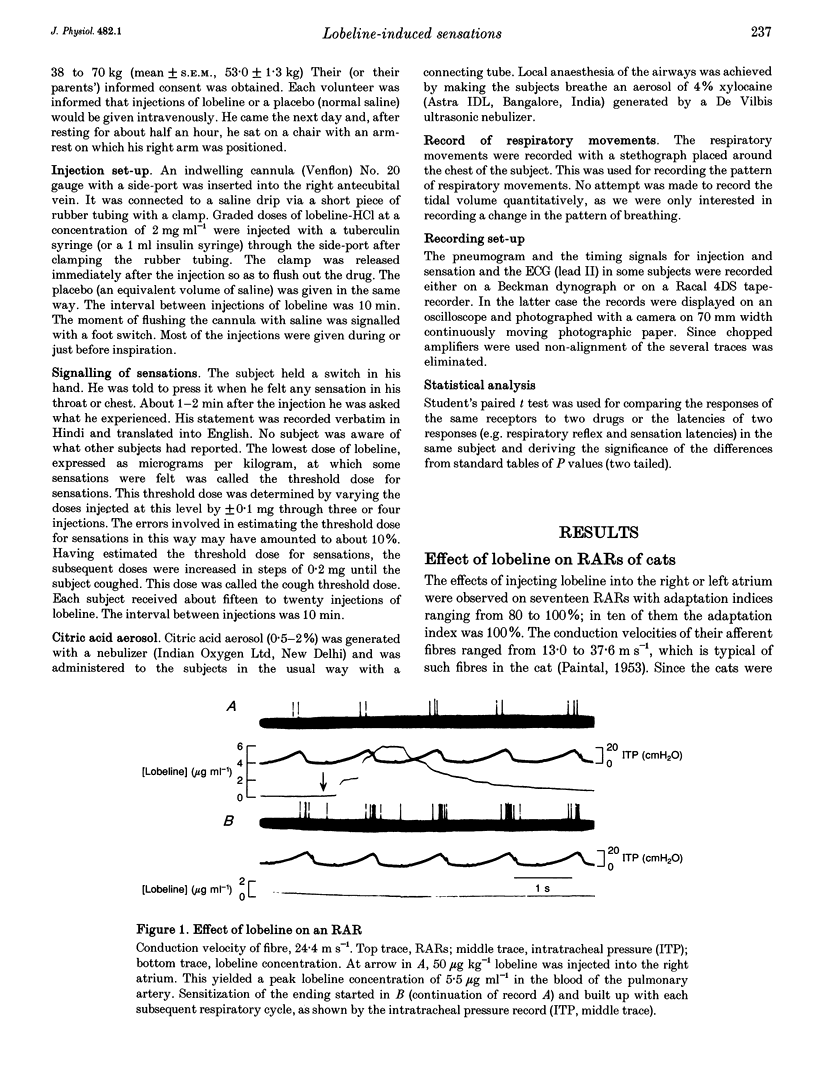
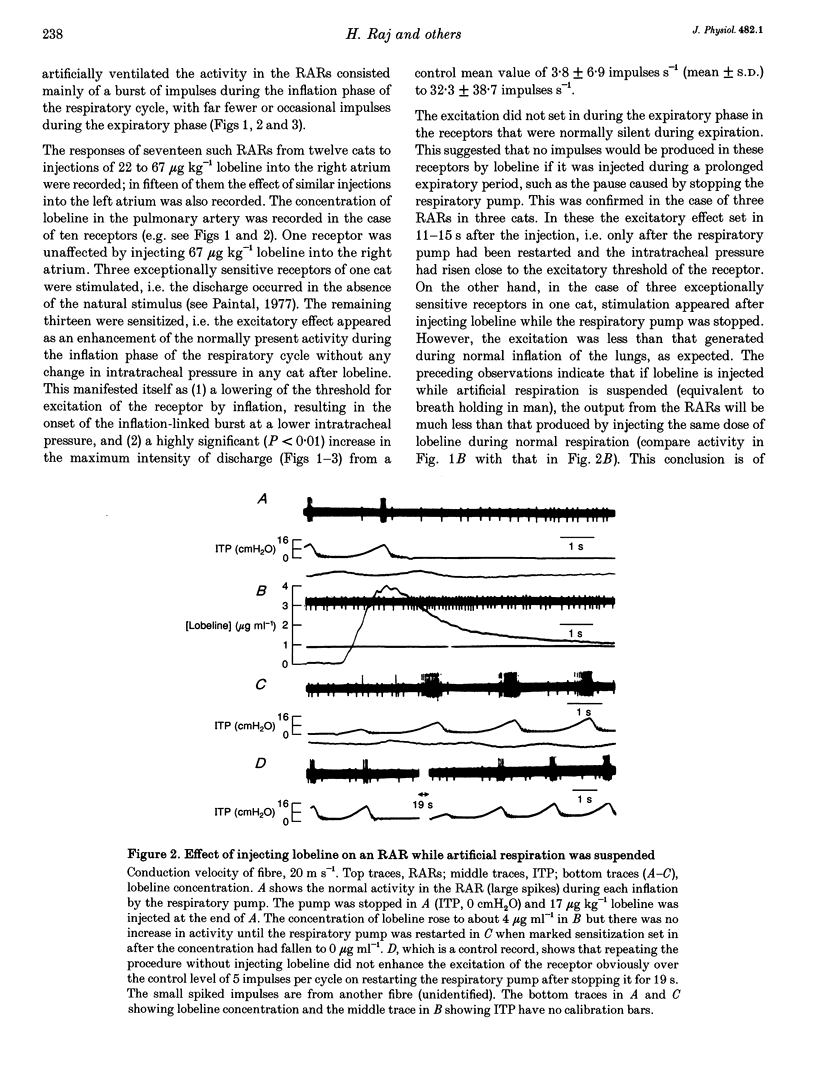
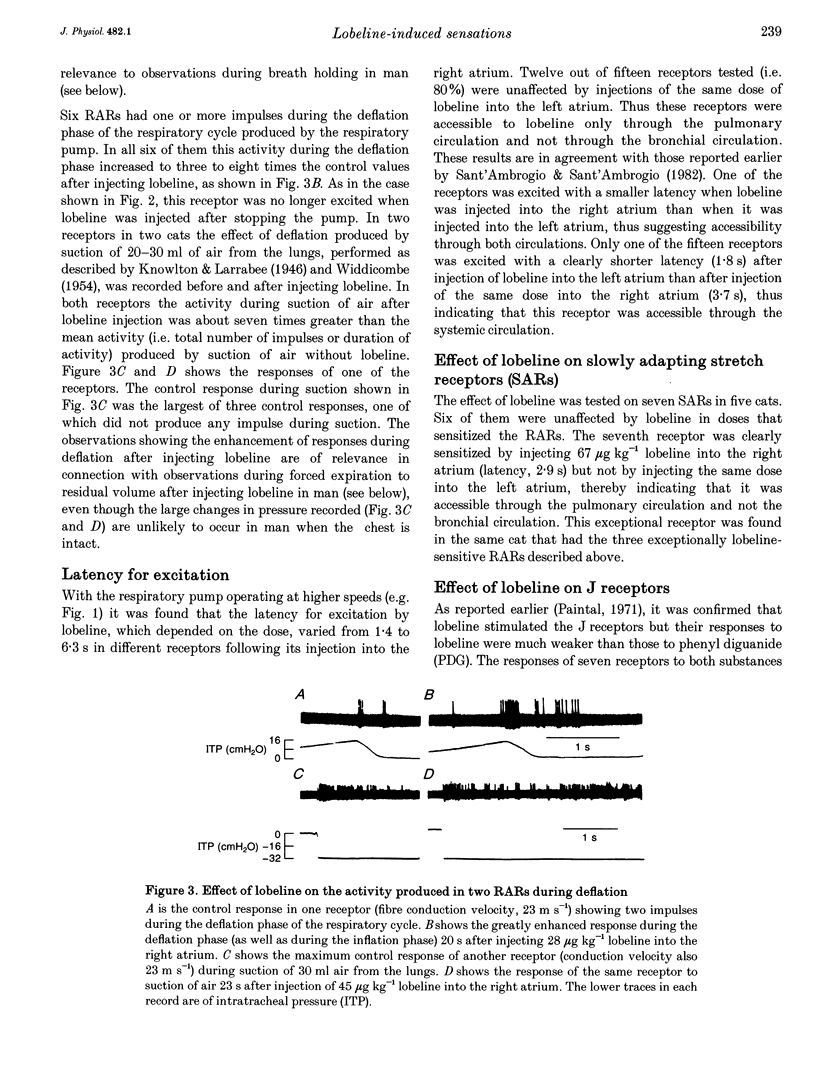
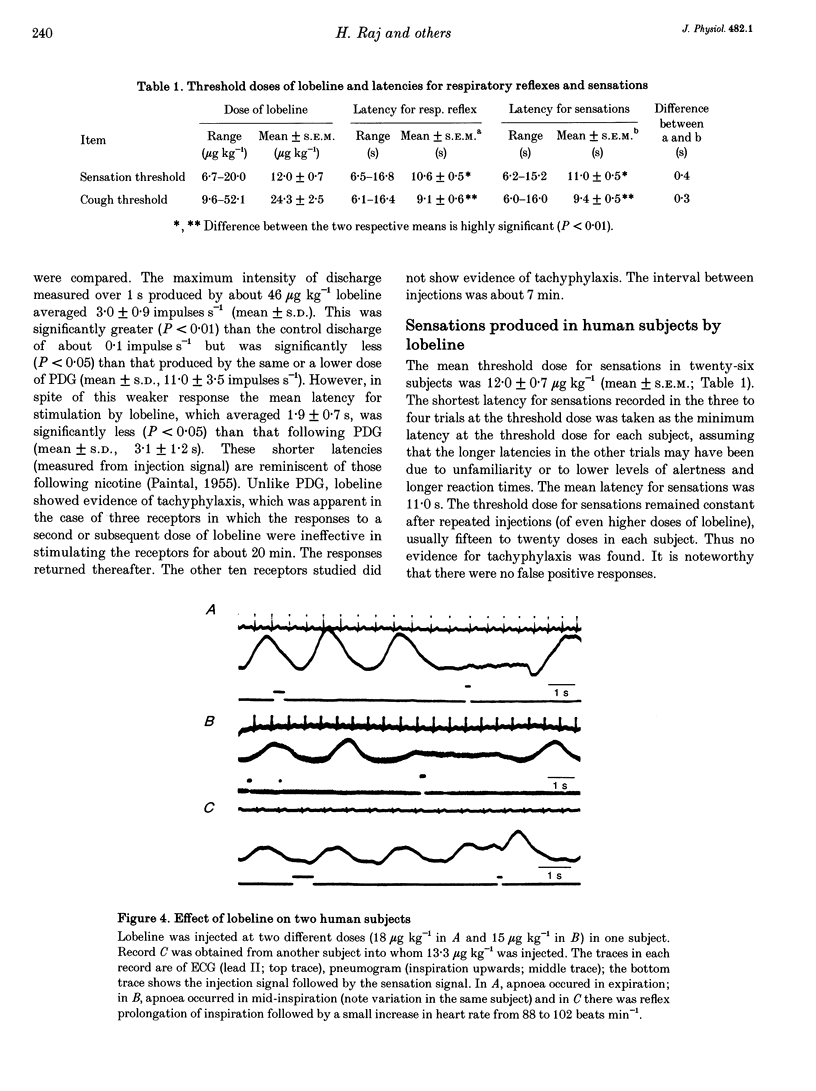
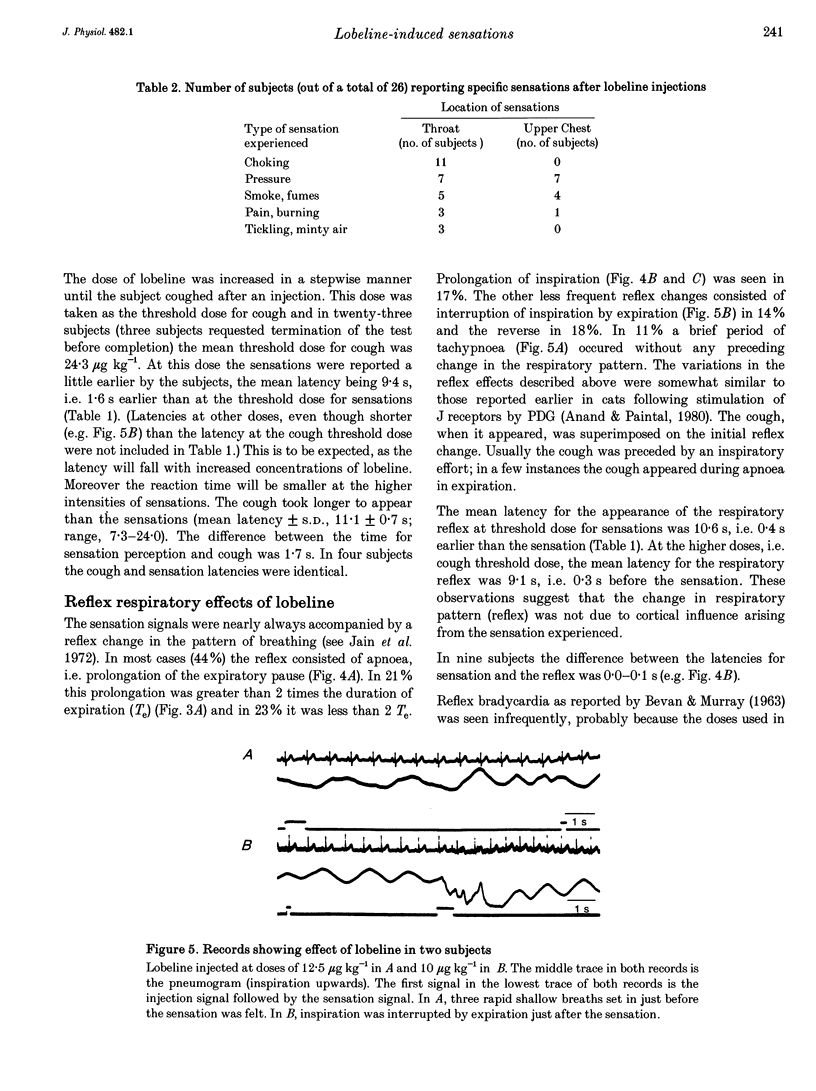
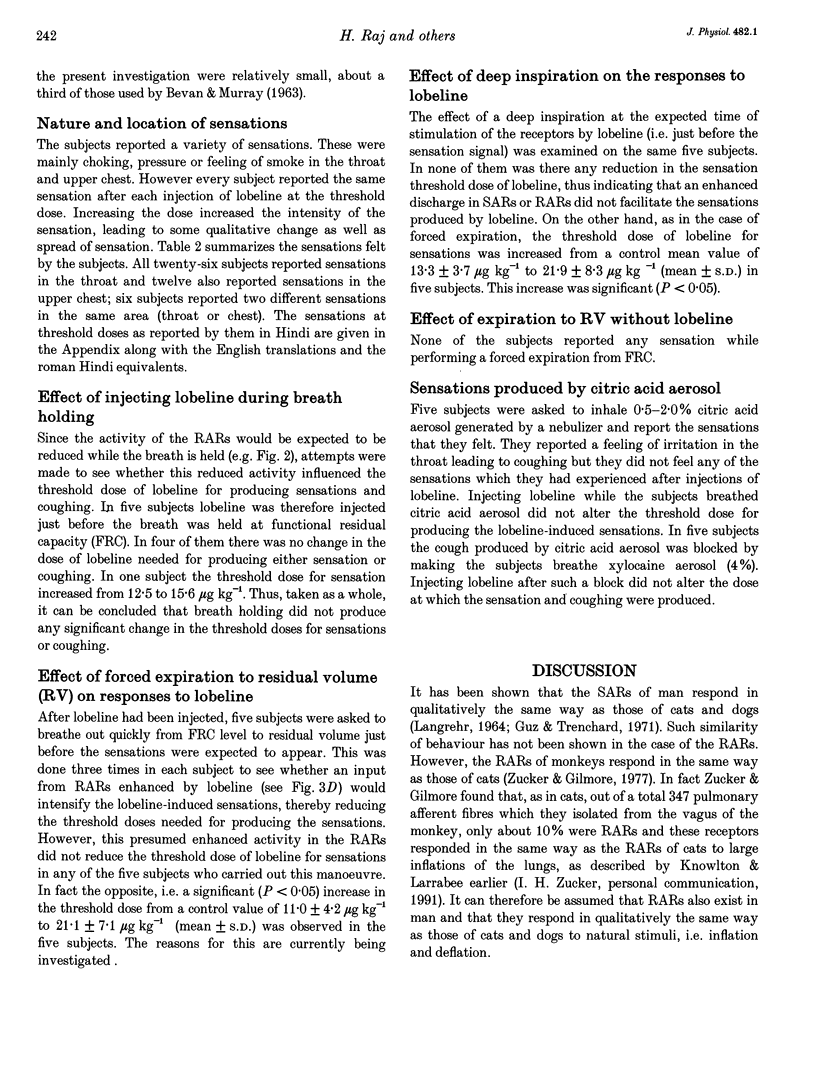

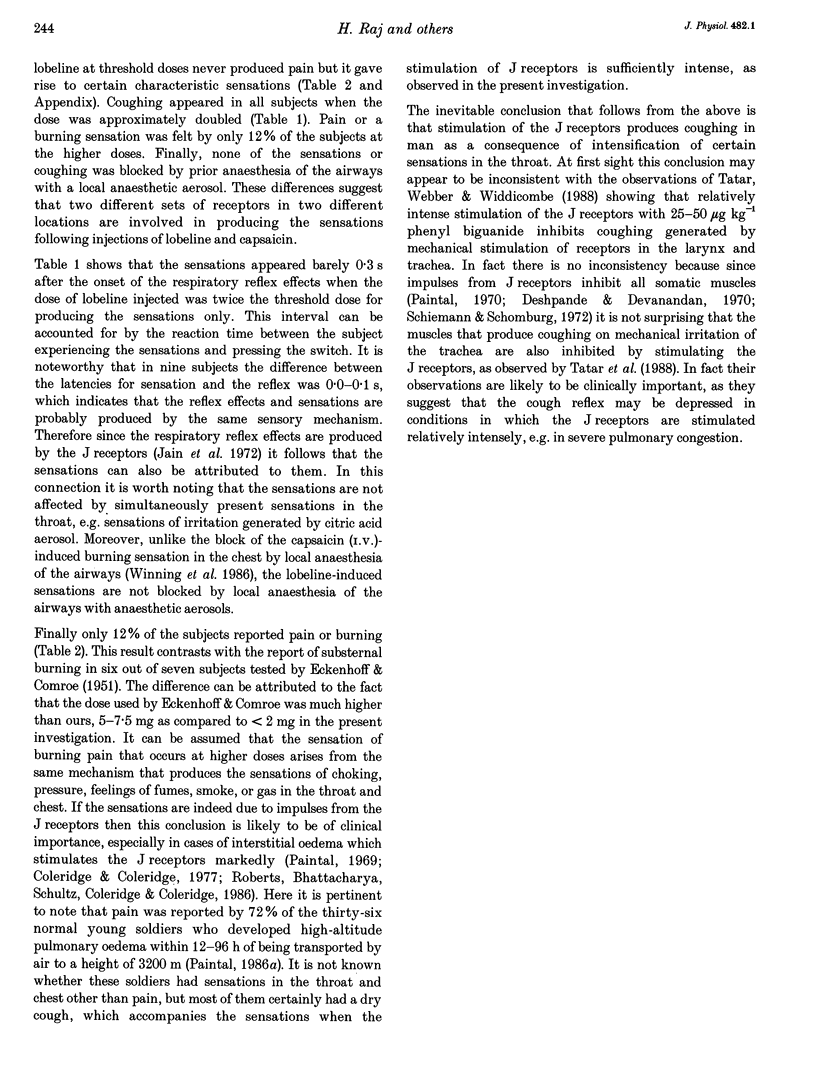
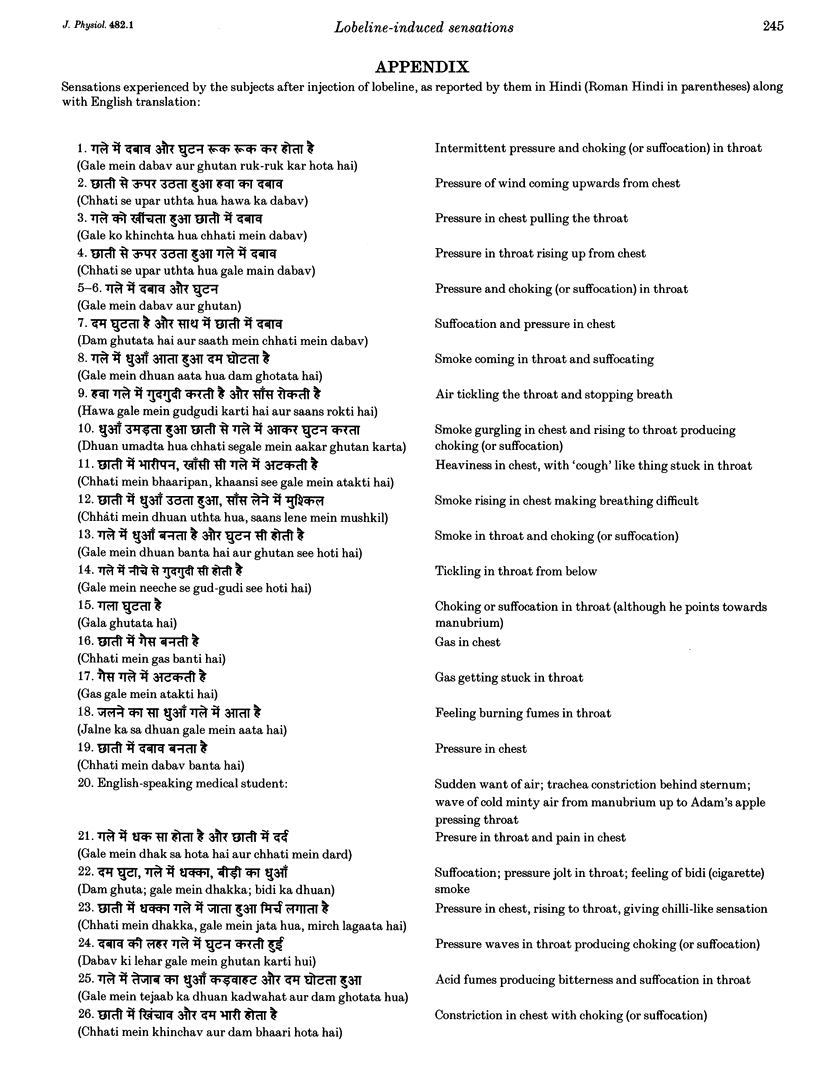
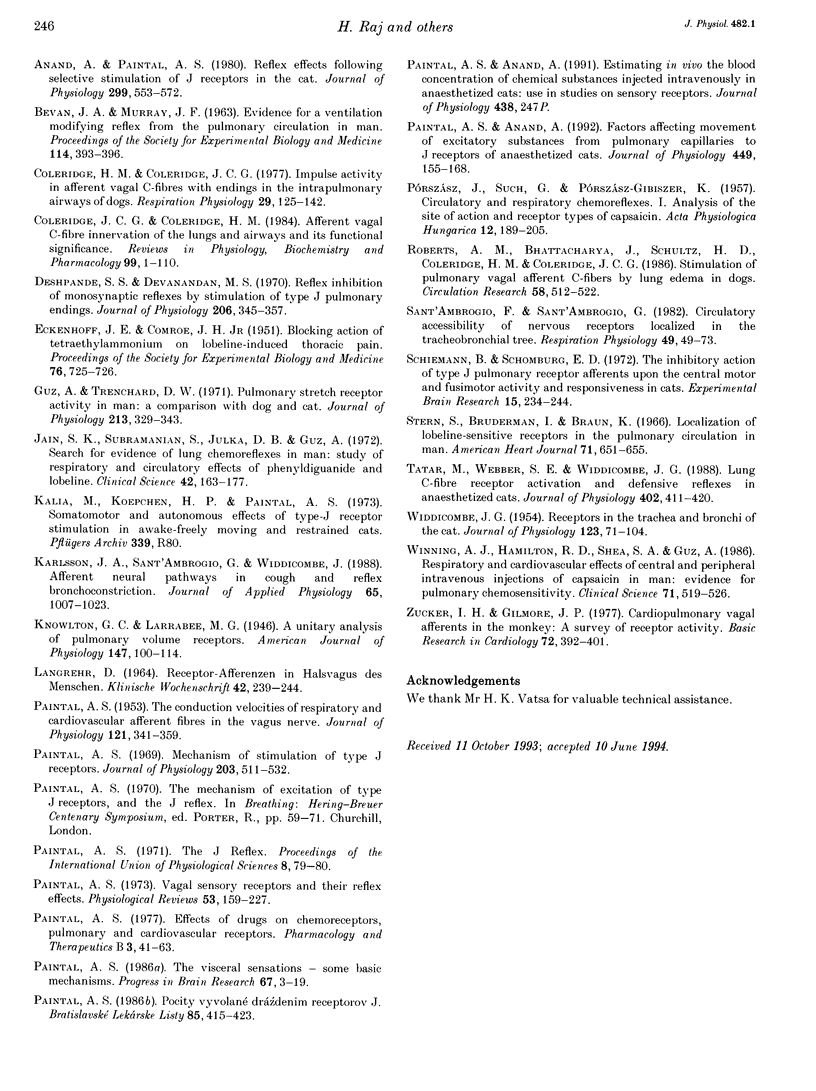
Selected References
These references are in PubMed. This may not be the complete list of references from this article.
- Anand A., Paintal A. S. Reflex effects following selective stimulation of J receptors in the cat. J Physiol. 1980 Feb;299:553–572. doi: 10.1113/jphysiol.1980.sp013142. [DOI] [PMC free article] [PubMed] [Google Scholar]
- BEVAN J. A., MURRAY J. F. EVIDENCE FOR A VENTILATION MODIFYING REFLEX FROM THE PULMONARY CIRCULATION IN MAN. Proc Soc Exp Biol Med. 1963 Nov;114:393–396. doi: 10.3181/00379727-114-28687. [DOI] [PubMed] [Google Scholar]
- Coleridge H. M., Coleridge J. C. Impulse activity in afferent vagal C-fibres with endings in the intrapulmonary airways of dogs. Respir Physiol. 1977 Apr;29(2):125–142. doi: 10.1016/0034-5687(77)90086-x. [DOI] [PubMed] [Google Scholar]
- Deshpande S. S., Devanandan M. S. Reflex inhibition of monosynaptic reflexes by stimulation of type J pulmonary endings. J Physiol. 1970 Feb;206(2):345–357. doi: 10.1113/jphysiol.1970.sp009017. [DOI] [PMC free article] [PubMed] [Google Scholar]
- ECKENHOFF J. E., COMROE J. H., Jr Blocking of tetraethylammonium on lobelin-induced thoracic pain. Proc Soc Exp Biol Med. 1951 Apr;76(4):725–726. doi: 10.3181/00379727-76-18608. [DOI] [PubMed] [Google Scholar]
- Guz A., Trenchard D. W. Pulmonary stretch receptor activity in man: a comparison with dog and cat. J Physiol. 1971 Mar;213(2):329–343. doi: 10.1113/jphysiol.1971.sp009385. [DOI] [PMC free article] [PubMed] [Google Scholar]
- Jain S. K., Subramanian S., Julka D. B., Guz A. Search for evidence of lung chemoreflexes in man: study of respiratory and circulatory effects of phenyldiguanide and lobeline. Clin Sci. 1972 Feb;42(2):163–177. doi: 10.1042/cs0420163. [DOI] [PubMed] [Google Scholar]
- Karlsson J. A., Sant'Ambrogio G., Widdicombe J. Afferent neural pathways in cough and reflex bronchoconstriction. J Appl Physiol (1985) 1988 Sep;65(3):1007–1023. doi: 10.1152/jappl.1988.65.3.1007. [DOI] [PubMed] [Google Scholar]
- LANGREHR D. RECEPTOR-AFFERENZEN IM HALSVAGUS DES MENSCHEN. Klin Wochenschr. 1964 Mar 1;42:239–244. doi: 10.1007/BF01487951. [DOI] [PubMed] [Google Scholar]
- PAINTAL A. S. The conduction velocities of respiratory and cardiovascular afferent fibres in the vagus nerve. J Physiol. 1953 Aug;121(2):341–359. doi: 10.1113/jphysiol.1953.sp004950. [DOI] [PMC free article] [PubMed] [Google Scholar]
- Paintal A. S., Anand A. Factors affecting movement of excitatory substances from pulmonary capillaries to type J receptors of anaesthetized cats. J Physiol. 1992 Apr;449:155–168. doi: 10.1113/jphysiol.1992.sp019079. [DOI] [PMC free article] [PubMed] [Google Scholar]
- Paintal A. S. Effects of drugs on chemoreceptors, pulmonary and cardiovascular receptors. Pharmacol Ther B. 1977;3(1):41–63. doi: 10.1016/0306-039x(77)90003-4. [DOI] [PubMed] [Google Scholar]
- Paintal A. S. Mechanism of stimulation of type J pulmonary receptors. J Physiol. 1969 Aug;203(3):511–532. doi: 10.1113/jphysiol.1969.sp008877. [DOI] [PMC free article] [PubMed] [Google Scholar]
- Paintal A. S. Pocity vyvolané drázdením receptorov J. Bratisl Lek Listy. 1986 Apr;85(4):415–423. [PubMed] [Google Scholar]
- Paintal A. S. The visceral sensations--some basic mechanisms. Prog Brain Res. 1986;67:3–19. doi: 10.1016/s0079-6123(08)62752-1. [DOI] [PubMed] [Google Scholar]
- Paintal A. S. Vagal sensory receptors and their reflex effects. Physiol Rev. 1973 Jan;53(1):159–227. doi: 10.1152/physrev.1973.53.1.159. [DOI] [PubMed] [Google Scholar]
- Roberts A. M., Bhattacharya J., Schultz H. D., Coleridge H. M., Coleridge J. C. Stimulation of pulmonary vagal afferent C-fibers by lung edema in dogs. Circ Res. 1986 Apr;58(4):512–522. doi: 10.1161/01.res.58.4.512. [DOI] [PubMed] [Google Scholar]
- Sant'Ambrogio F. B., Sant'Ambrogio G. Circulatory accessibility of nervous receptors localized in the tracheobronchial tree. Respir Physiol. 1982 Jul;49(1):49–73. doi: 10.1016/0034-5687(82)90103-7. [DOI] [PubMed] [Google Scholar]
- Schiemann B., Schomburg E. D. The inhibitory action of type J pulmonary receptor afferents upon the central motor and fusimotor activity and responsiveness in cats. Exp Brain Res. 1972;15(3):234–244. doi: 10.1007/BF00235909. [DOI] [PubMed] [Google Scholar]
- Stern S., Bruderman I., Braun K. Localization of lobeline-sensitive receptors in the pulmonary circulation in man. Am Heart J. 1966 May;71(5):651–655. doi: 10.1016/0002-8703(66)90315-2. [DOI] [PubMed] [Google Scholar]
- Tatar M., Webber S. E., Widdicombe J. G. Lung C-fibre receptor activation and defensive reflexes in anaesthetized cats. J Physiol. 1988 Aug;402:411–420. doi: 10.1113/jphysiol.1988.sp017212. [DOI] [PMC free article] [PubMed] [Google Scholar]
- WIDDICOMBE J. G. Receptors in the trachea and bronchi of the cat. J Physiol. 1954 Jan;123(1):71–104. doi: 10.1113/jphysiol.1954.sp005034. [DOI] [PMC free article] [PubMed] [Google Scholar]
- Winning A. J., Hamilton R. D., Shea S. A., Guz A. Respiratory and cardiovascular effects of central and peripheral intravenous injections of capsaicin in man: evidence for pulmonary chemosensitivity. Clin Sci (Lond) 1986 Nov;71(5):519–526. doi: 10.1042/cs0710519. [DOI] [PubMed] [Google Scholar]
- Zucker I. H., Gilmore J. P. Cardiopulmonary vagal afferents in the monkey: a survey of receptor activity. Basic Res Cardiol. 1977 Jul-Aug;72(4):392–401. doi: 10.1007/BF02023598. [DOI] [PubMed] [Google Scholar]


